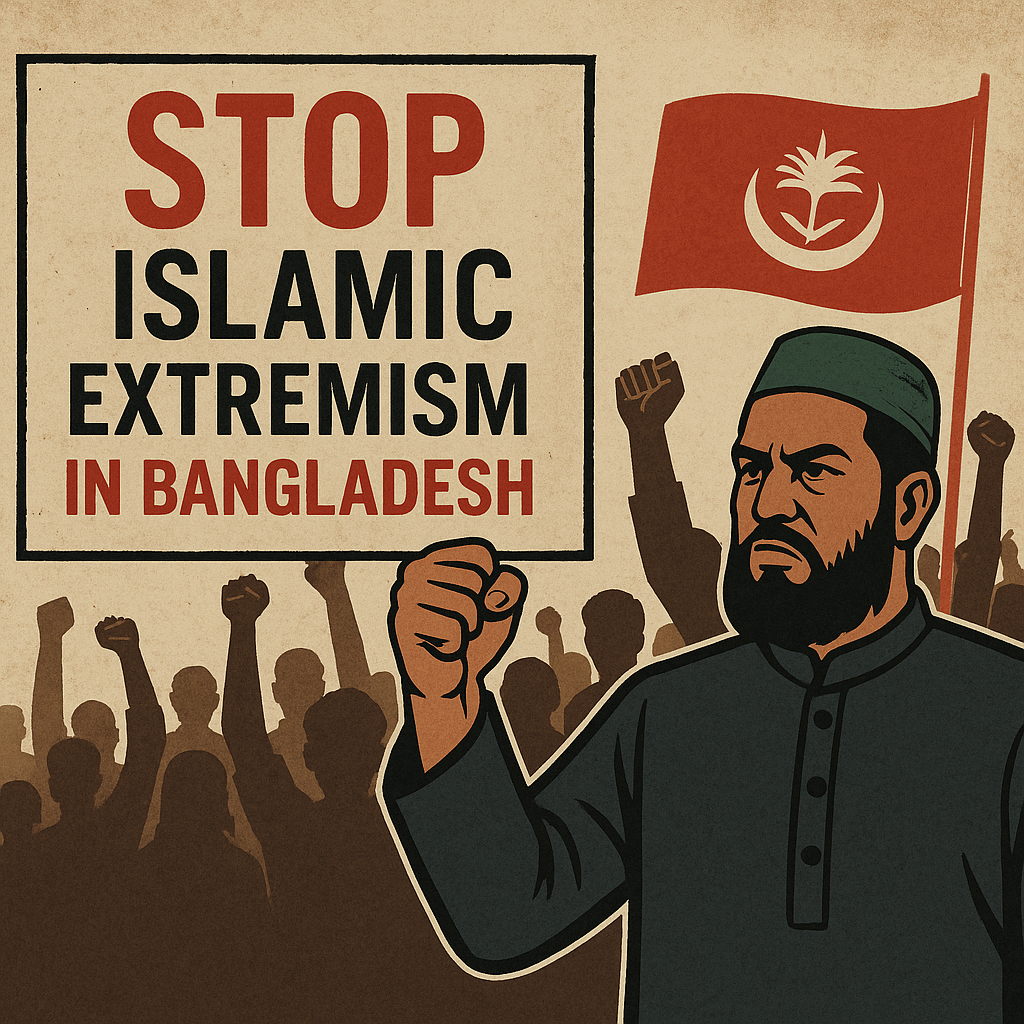
In recent decades, Bangladesh has witnessed a troubling rise in Islamic extremism, often fueled—directly or indirectly—by the ideological rhetoric and mobilization strategies of Islamist political parties. While the nation was founded on secular and democratic principles in 1971, the re-emergence of religious extremism has become a significant threat to national security and social harmony.
Islamist Political Influence: The Role of Jamaat-e-Islami and Others
One of the central figures in this dynamic is Jamaat-e-Islami Bangladesh, a political party with deep roots in the Islamist movement. Although it operated legally for many years and even held parliamentary seats, Jamaat’s ideological affinity with conservative and often radical Islamic principles has long sparked controversy.
- Post-2001 Elections: When Jamaat became a coalition partner in the BNP-led government after the 2001 general election, extremist elements began to flourish under what many perceived as state-sanctioned negligence. Several key figures associated with Jamaat were accused of turning a blind eye—or worse, offering tacit support—to militant groups such as Harkat-ul-Jihad al-Islami (HuJI-B) and Jama’atul Mujahideen Bangladesh (JMB).
Major Incidents of Extremist Violence
1. August 21, 2004 – Grenade Attack on Sheikh Hasina
One of the most shocking examples of Islamist-fueled violence was the grenade attack on Sheikh Hasina, then Leader of the Opposition, at a rally in Dhaka. The attack, which killed 24 people and injured over 300, was linked to Islamist militants with alleged political protection from elements within the BNP-Jamaat government. The attack was carried out using military-grade grenades smuggled from Pakistan.
2. August 17, 2005 – Nationwide Bomb Blasts
On this day, Jama’atul Mujahideen Bangladesh (JMB) orchestrated simultaneous bombings in 63 of the country’s 64 districts, injuring dozens and creating mass panic. The group distributed leaflets demanding the implementation of Sharia law. This marked a watershed moment, proving that extremism had grown into a coordinated, national threat.
3. 2007–2013 – Rise in Targeted Killings
In the following years, especially between 2013 and 2016, a wave of targeted assassinations occurred across Bangladesh. Secular bloggers, LGBT activists, and non-Muslim minorities were frequently targeted by Islamist militants. Notable cases include:
- Ahmed Rajib Haider, a secular blogger, hacked to death in February 2013.
- Avijit Roy, an American-Bangladeshi atheist blogger, murdered in February 2015 near Dhaka University.
- Xulhaz Mannan, a gay rights activist, killed in April 2016.
Many of these killings were claimed by Ansar al-Islam, believed to be an affiliate of al-Qaeda in the Indian Subcontinent (AQIS).
The Holey Artisan Attack – July 1, 2016
The most brutal attack in Bangladesh’s modern history occurred when five young militants stormed the Holey Artisan Bakery in Dhaka’s upscale Gulshan area. They killed 22 people, mostly foreigners, in a 12-hour standoff. The Islamic State claimed responsibility, though the Bangladeshi government insists it was a local group, Neo-JMB, a splinter of the original JMB.
The attackers were mostly well-educated, coming from elite institutions—a fact that shattered the myth that extremism only attracts the poor or uneducated. Investigations revealed they were radicalized through underground networks and online Islamist propaganda.
Educational Institutions and Islamist Radicalization
Madrasas, particularly Qawmi madrasas, have been criticized for operating outside the national curriculum and offering little oversight. While not all madrasas promote violence, some have become breeding grounds for radical ideologies, sometimes affiliated with Deobandi and Wahhabi movements.
Notably, institutions linked to Hefazat-e-Islam, a conservative clerical group, have staged large-scale rallies demanding blasphemy laws and opposing secular education reforms. In May 2013, a Hefazat-led rally in Motijheel, Dhaka, turned violent, resulting in over 50 deaths during police crackdowns.
State Response: Mixed Signals
The Awami League government, especially post-2016, has taken a strong stance against militancy, capturing and executing top JMB leaders, including Shaikh Abdur Rahman and Bangla Bhai. However, critics argue that the state has sometimes politicized anti-terror campaigns, using extremism charges to suppress opposition, including secular political dissent.
Moreover, allowing Islamist groups like Hefazat-e-Islam to influence policies—such as the removal of secular content from textbooks in 2017—has been viewed as a dangerous compromise with conservative forces.
Conclusion: The Urgent Need for Balanced Action
Islamic extremism in Bangladesh is not merely a law-and-order issue but a sociopolitical problem deeply entwined with ideological politics, education policy, and geopolitical influence. Political parties that flirt with extremist ideology—whether for votes or control—have contributed to legitimizing radicalism.
To secure its democratic and secular identity, Bangladesh must crack down not just on violent acts, but also on the ideological breeding grounds—be it political parties, unregulated madrasas, or social media networks—that fuel extremism in the name of religion. The price of inaction is not just terrorism, but the erosion of the nation’s founding ideals.